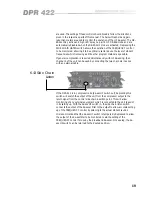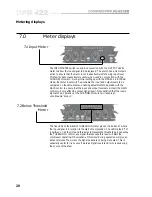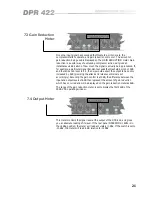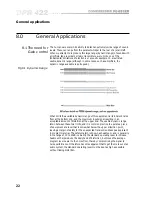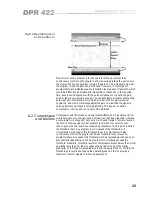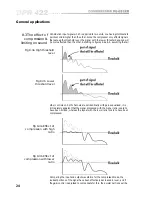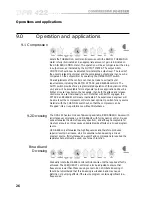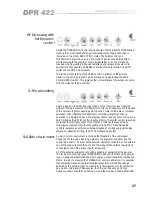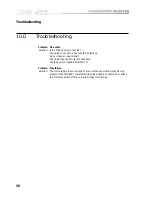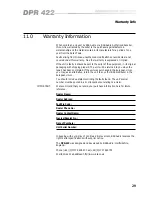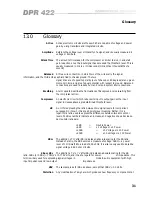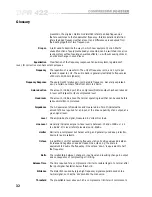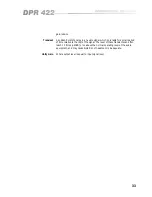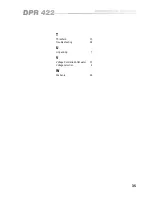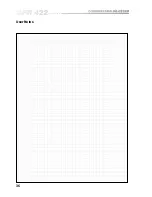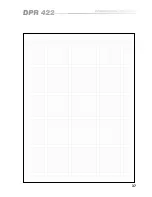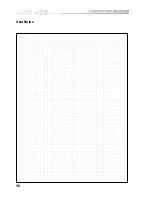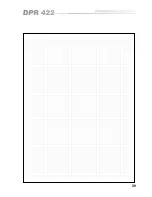
32
presents in the original. Harmonic distortion refers to added frequencies
that are overtones to the fundamental frequency. Intermodulation distortion
refers to added frequencies that are sum and difference values derived from
the beating together of two frequencies.
Drop-in
A term used to describe the way in which new equipment, or a hitherto
unused function of equipment already connected, can be switched into a live
sound system without causing unwanted effects, i.e: without causing clicks or
a noticable change in sound level.
Equalisation
Modification of the frequency response of an audio system, regardless of
level, for corrective or enhancement purposes.
Frequency
The repetition of a waveform. The unit of frequency is Hz, and 1 cycle per
second is equal to 1Hz. The audio band is generally restricted to frequencies
of 20Hz to 20,000Hz (20kHz).
Frequency Response
The equipment’s relative gain compared to frequency. Generally expressed
as +/- a certain number of dBs from 20Hz to 20kHz.
Gain reduction
The amount, in dBs, by which a compressor/limiters output has been reduced
in level with respect to its uncompressed level.
Headroom
The amount, in dBs, above the normal operating level that can be used before
serious distortion commences.
Impedance
The AC equivalent of resistance and measured in ohms. It indicates the
amount of drive required for an input, or the drive capability of an output, at a
given signal level.
Level
The amplitude of a signal, measured in Volts or Decibels.
Line Level
Generally indicates a signal whose level is between -10 and +10dBu or -14
to +6 dBV. Mic level refers to levels around -40dBu.
Limiter
Similar to a compressor but harder acting, and generally used as a protection
device for audio systems.
Octave
A logarithmic unit for expressing frequency ratios. Positive values indicate an
increase and negative ones a decrease. One octave ‘up’ the scale is
equivalent to double the frequency. One octave ‘down’ is equivalent to half
the frequency.
Ratio
The relationship between change in input level and resulting change in output
as a consequence of compressing or limiting.
Release Time
The time required for a compressor or limiter to restore its gain to normal, after
the input signal has fallen below threshold.
Sibilance
The distortion caused by large high frequency signals superimposed onto a
normal signal, such as the ‘sss’ sounds of human voice.
Threshold
The pre-settable level above which a compressor or limiter will commence to
Glossary
Содержание DPR 422
Страница 1: ...1 DPR 422 User Manual...
Страница 8: ...8 The DPR 422 Fig 4 2 Rear Panel Fig 4 1 Front Panel...
Страница 9: ...9 All numbers in bubbles refer to Section numbers...
Страница 36: ...36 User Notes...
Страница 37: ...37...
Страница 38: ...38 User Notes...
Страница 39: ...39...
Страница 40: ...40 User Notes...


